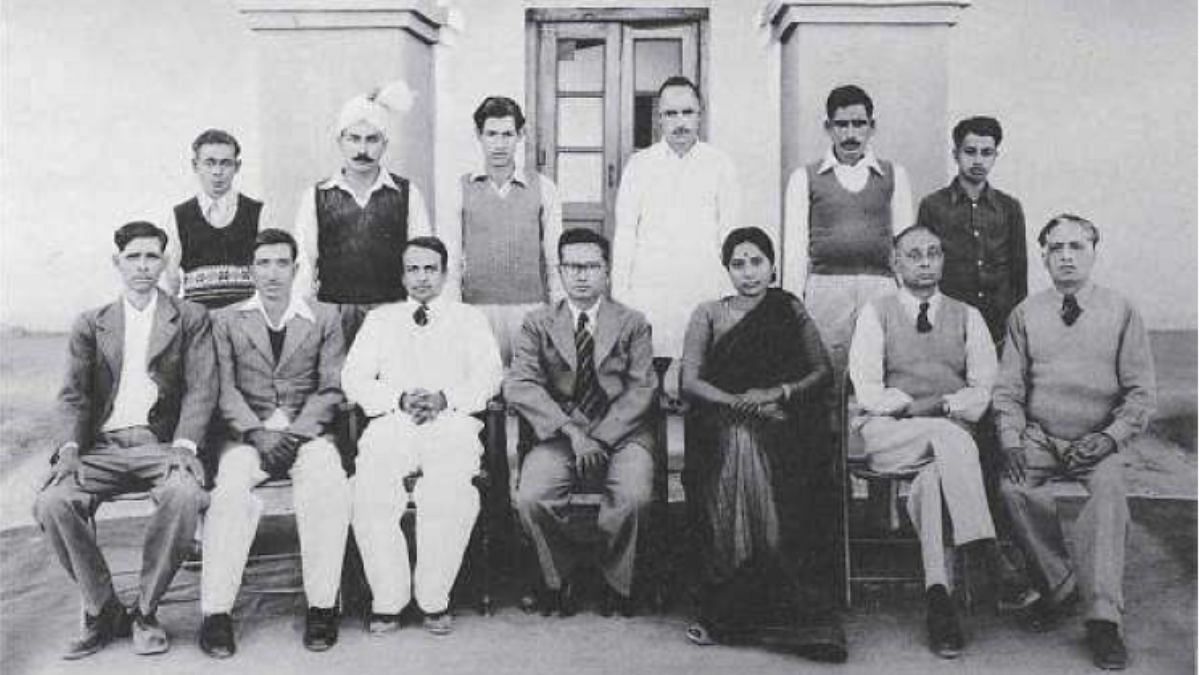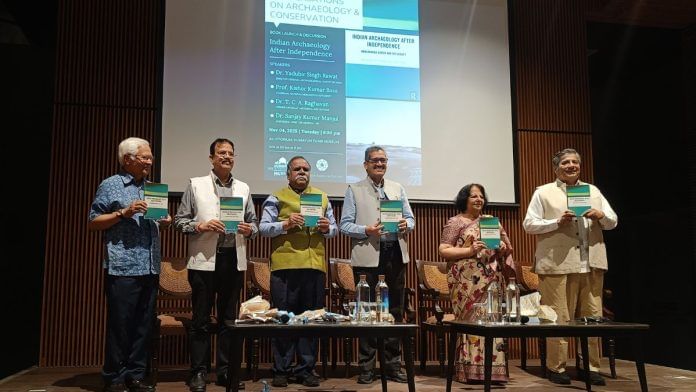New Delhi: Amalananda Ghosh is not a name that comes up naturally in conversations on Indian archaeology. He was the torchbearer of Indian archaeology after Independence, steering the Archaeological Survey of India away from its colonial roots.
“It is surprising that we never actually recognise his contribution. He focuses on the classification of pottery, which is the major tool of the archaeologists to at least establish the chronology of the sites in today’s time,” said Yadubir Singh Rawat, Director General of ASI at the launch of historian Himanshu Prabha Ray and Ajay Yadav’s recent book titled Indian Archaeology after Independence: Amalananda Ghosh and his Legacy at Delhi’s Humayun Tomb Museum Auditorium.
Rawat was joined by KK Basa, chairman of National Monuments Authority, Sanjay Manjul, additional director general at ASI, TCA Raghavan, former diplomat and historian, author and historian Himanshu Prabha Ray on the panel. Ratish Nanda, conservation architect at Aga Khan Trust for Culture was the moderator.
The two-hour long discussion discussed the post-colonial perspectives on Indian archaeology.
The book examines ASI’s work post-Independence and challenges the notion that the institution primarily indulged in the discovery of Harappan sites.
“This book highlights the contribution of the longest serving director general of the ASI. Also, it turns on its head a lot of common perceptions believed to be knowledge about the ASI,” said Nanda, adding that Harappan and those sites are just a part of the puzzle.

Indian archaeology after Independence
Rawat said only few Indian archaeologists before Partition, such as Daya Ram Sahni, KN Dikshit, had the luck of being recognised for their contribution. The glory always went to the British and other foreign explorers.
According to Rawat, it was the Indians who helped the British explorers and excavators. “Indians were getting jobs in the ASI because of their knowledge of Sanskrit and epigraphy,” he said, adding that Ghosh himself trained during the British period.
But Ghosh changed Indian archaeology after Independence, bringing a new perspective and vision.
“He had an excellent academic rigour,” said Basa.
Ghosh mapped hundreds of sites which led to the renaming of the Indus Valley civilisation to something more neutral—the Harappan civilisation. He brought a national perspective to the exploration of Independent India. He spearheaded major excavations and explorations in Bikaner region. He also started ASI’s in-house annual publication “Indian Archaeology–A Review (IAR)
“Real archaeology started after independence because we now had our own monuments,” said Rawat. Earlier, monuments were divided among princely states. After the reorganisation of states, all monuments came under the ambit of ASI.
But we lost the major Harappan sites to the Partition. There was a question of what was left in India, said Rawat. “That inspired the archaeologists of that time to systematically explore the old routes,” said Rawat.
Ghosh spearheaded the exploration and found dozens of sites along the old Drishadvati or Saraswati river belt.
“During his exploration, he noticed one of the cultures that he termed as the Sothi culture and he identified it with the early Harappan phase,” said Rawat, adding that Ghosh was a very silent worker and his book Encyclopedia of India Archaeology was one of his great contribution.
This culture is an early ceramic tradition and a settlement site in Rajasthan, which preceded and is related to the early phase of Indus Valley Civilisation.
“It [the book] contextualises the production of colonial forms of knowledge, interrogates colonial stereotypes, decolonisation and sometimes provides an alternative to colonial forms of knowledge,” said Basa, bashing the Western perspective about India.
Basa said Roy’s book is a corrective to the histories of archaeology during post-Partition years.
Also read: Why this Indian archaeologist renamed the Indus Valley Civilisation
Ghosh’s legacy
A meeting between Ghosh’s son Asim Ghosh and Manjul became instrumental to Ray and Yadav’s book.
Manjul received two of Ghosh’s diaries, including the famous Bikaner diary. “A large part of the diary is there in this book. I tried my best to provide the material for this book,” said Manjul, who is also the director of the Institute of Archaeology, which was the brainchild of Ghosh.
Manjul said the institute shaped a large number of archaeologists across the neighbouring countries.
Manjul said 20 per cent of the sites which were explored and mentioned by Ghosh have almost vanished. “It is alarming and day by day many of the sites are no more,” he said.
Referring to the theft attempt at the National Museum in September, a member in the audience, a JNU student, asked Manjul if ASI is prepared for the conservation of artefacts. An Ashoka University professor tried to steal a replica of a dancing girl from the National Museum.
“ASI has the eye on the illicit trafficking or the preservation of artefacts. The National Museum incident was unfortunate,” Manjul replied.
But former diplomat and historian TCA Raghavan weighed in on the need for an ASI archive, saying apart from archaeology, the institution has a history of more than 160 years.
“History means archive and the ASI should have an archive and make that available to the researchers,” he said.
(Edited by Theres Sudeep)






